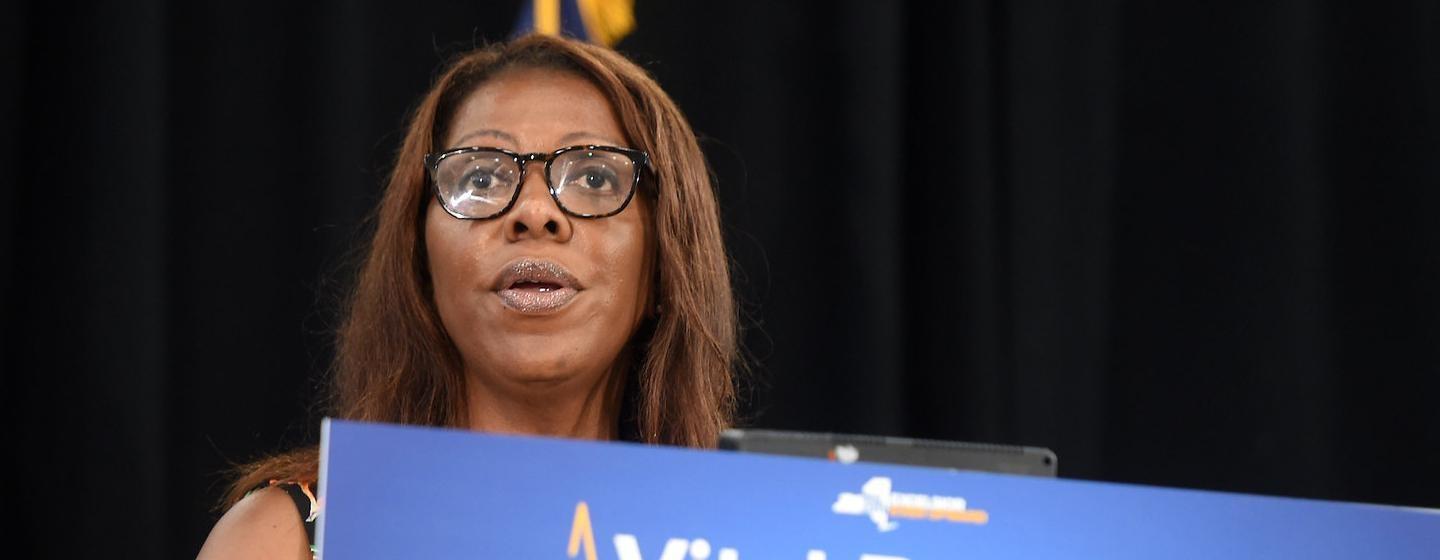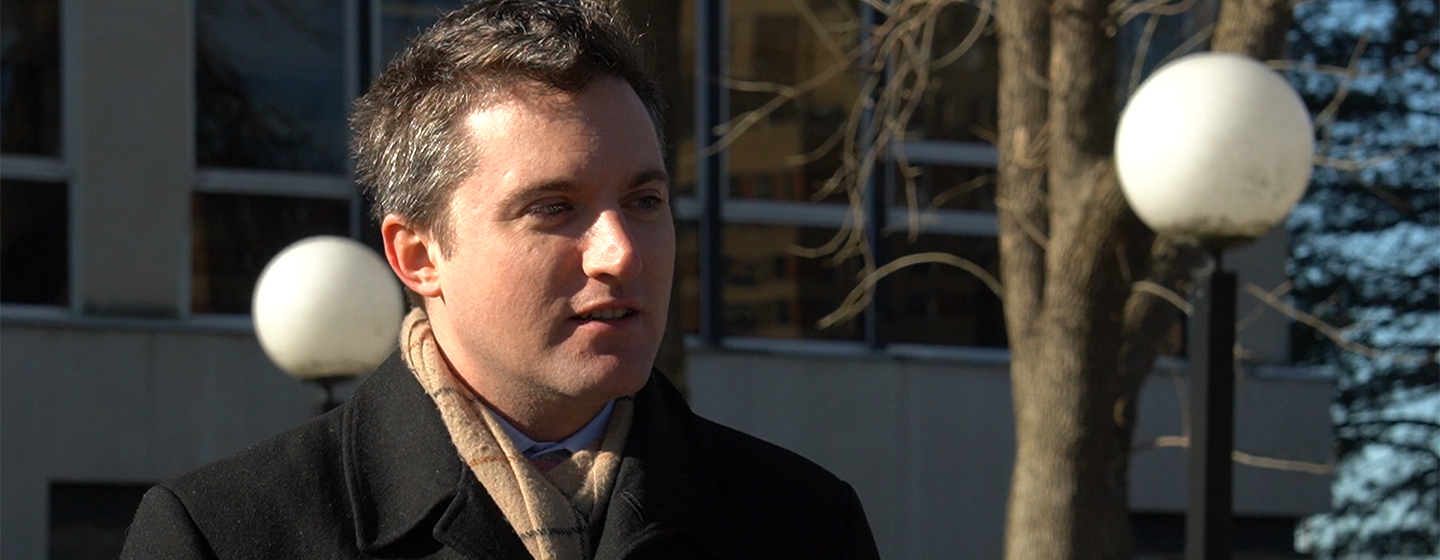NY May Have Undercounted Nursing Home Deaths By 50%, State AG Says

COVID-19 in NY's Nursing Homes
New York may be undercounting the number of COVID-19 deaths linked to nursing homes by as much as 50%, state Attorney General Letitia James said Thursday, meaning the state’s current count of about 9,000 fatalities at those facilities may be far from the actual number.
The report also found that lack of compliance by nursing homes on infection control protocols, and a lack of staff per patient, may have contributed to higher fatality rates.
“While we cannot bring back the individuals we lost to this crisis, this report seeks to offer transparency that the public deserves and to spur increased action to protect our most vulnerable residents,” James said.
State Health Commissioner Howard Zucker responded to the report in a statement late Thursday, saying that nursing home operators and the former federal administration were to blame for the state's high share of deaths at those facilities.
"Ultimately, the OAG's report demonstrates that the recurring problems in nursing homes and by facility operators resulted from a complete abdication by the Trump administration of its duty to manage this pandemic," Zucker said.
He pushed back against the argument that the state had undercounted deaths at nursing homes, instead defending the state's method of reporting that data.
The state Department of Health, to date, has only publicly reported deaths at nursing homes if the resident died in the care of the facility. Residents who were transferred to the hospital before their death have not been counted in the state’s nursing home data.
As of Wednesday, the state Department of Health had reported close to 9,000 confirmed and presumed deaths associated with New York’s nursing homes.
But that number is likely a drastic undercount, the state Attorney General’s Office said in the report, and could be as much as double what’s been publicly reported. That would confirm suspicions from lawmakers and watchdog groups who’ve questioned the state’s count.
According to the report, the state Attorney General’s Office collected data from nursing homes on deaths both within and outside the facility, and those numbers were higher than what had been reported by the state.
When the numbers were crunched, the state Attorney General’s Office estimated that the data publicly released by the state Department of Health had undercounted deaths at nursing homes by approximately 50%.
“[The Office of the Attorney General] is investigating those circumstances where the discrepancies cannot reasonably be accounted for by error or the difference in the question posed,” the report said.
Zucker said that wasn't true, and that only 9,786 confirmed deaths were associated with nursing homes from the beginning of March to January 19. That number does not include the state's 2,783 presumed deaths linked to nursing homes, only those that were confirmed to be caused by COVID-19.
But for the first time, Zucker revealed the number of confirmed deaths of nursing home residents who died after they were transferred to the hospital. Of the 9,786 confirmed deaths, 3,829 died after they were sent to the hospital, Zucker said.
"This represents 28% of New York's 34,742 confirmed fatalities — below the national average," Zucker said. "All of this confirms that many nursing home operators made grave mistakes and were not adequately prepared for this pandemic."
The Attorney General's Office also found that conditions at nursing homes may have also contributed to a higher fatality rate.
First, the report found that some facilities did not follow proper infection control protocols. That included a failure to separate residents diagnosed with COVID-19 from the general population, in some cases, according to the report.
There were also reports that some nursing homes demanded that employees with symptoms of the virus continue working with residents, and that employees weren’t adequately screened or tested for COVID-19.
“Clearly, some facilities were not prepared to handle outbreaks through early and effective training or staffing,” the report said.
The report also found that more than two-thirds of the state’s nursing homes had the lowest-possible staffing ratings from the federal government, meaning there weren’t enough staff for the number of residents at those facilities.
According to the report, there were more fatalities at facilities with lower staffing levels.
“Given the complaints of neglect received during the COVID-19 pandemic30 and the OAG investigation findings to date, the pandemic has laid bare the risks to vulnerable nursing home residents that are inherent in a low staffing business model,” the report said.
The report also recommended that the state reverse a new law that essentially provides certain legal immunity to nursing homes related to the care of individuals during the COVID-19 pandemic.
Lawmakers from both sides of the aisle issue statements reacting to the report's findings. Senate Majority Leader Andrea Stewart-Cousins, who's left the door open for issuing a subpoena to the state Department of Health, said she was reviewing the report and that it could be used for a legislative response.
"Northing will bring back our loved ones that we lost but it is crucial that information guides our responses so this will not happen again," Stewart-Cousins said.
Senate Minority Leader Rob Ortt, a Republican from Niagara County, went further, calling for Health Commissioner Howard Zucker to immediately resign.
"By underreporting COVID deaths in nursing homes by as much as 50 percent, the Department of Health has betrayed the public trust. To repair that broken trust, I am calling on Health Commissioner Howard Zucker to resign," Ortt said.
Sen. James Skoufis, a Democrats from the lower Hudson Valley who chairs the Senate Investigations Committee, said he expects Zucker to hand over detailed, transparent data to the Legislature sometime in the next few weeks, with a deadline of the Feb. 25 state budget hearing on health-related spending.
If the state doesn't provide that data, Skoufis said he would support a move to subpoena the agency.
"It is my full expectation that he provides answers by the time of his testimony, otherwise he can anticipate an unpleasant and uncomfortable hearing," Skoufis said. "Without answers by then, I will support a move to compel the information from DOH.”
The state Department of Health, last year, released its own report on deaths at New York's nursing homes, saying the virus likely entered those facilities early on and spread due to asymptomatic staff and visitors.
Read the full report:
Related
Health Commissioner Howard Zucker responds to the AG's report: pic.twitter.com/Srme3T1WpF
— Dan Clark (@DanClarkReports) January 28, 2021
Breakdown of nursing home numbers from state:
— Dan Clark (@DanClarkReports) January 28, 2021
- Confirmed Deaths AT Nursing Homes: 5,957
- Confirmed Nursing Home Deaths AT Hospitals: 3,829
- Presumed Nursing Home Deaths AT Nursing Homes: 2,783
Total: 12,569 (I think)
(We don't have presumed nursing home deaths at hospitals.)
Health Commissioner Howard Zucker has betrayed the public trust. It’s time for him to resign.
— Rob Ortt (@SenatorOrtt) January 28, 2021
My full statement: pic.twitter.com/v26EEdwW6L
Only one interpretation of this report is apparent to me:
— Alessandra Biaggi (@Biaggi4NY) January 28, 2021
NY has lacked integrity and compassion for the elderly and NY has treated the loss of elderly life, as the cost of doing business.
Few actions taken by this administration have been as egregious or appalling as this.

Lawmakers Urge Cuomo Admin to Provide Wi-Fi in Group Homes
State lawmakers who chair committees for people with disabilities say the state needs to pay for Wi-Fi for group home residents.
Stephen Hanse discusses how COVID-19 spread in the nursing facilities.


